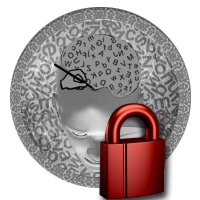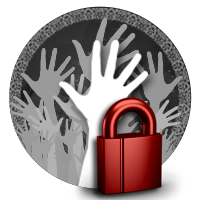
Menopause is a unique experience for every woman. So, it is the end of a woman’s monthly menstrual periods and ovulation. Also it is the points to other changes in the body and mind, triggered in part because the body begins to produce fewer amounts of the hormones estrogen and progesterone (among others).
According to Ayurvedic medicine when we enter the cycle of menopause, the fertility of women withdraws, decreases only to give room for “spiritual fertility”. So, it does not consider this to be a disease but a time to promote health, new attributes, spiritual transformations and be free of troublesome symptoms.
In particular, menopause is a drastic change for women, during which the psycho-emotional and physiological personality of women undergoes very important change processes. Then, it should not be forgotten that the 3 doshas have an important influence on the life cycles, regardless of the constitution of each person.
Kapha prevails in early childhood until it enters puberty.
Pitta dominates during adult and creative until reaching the age of 50, where the human being enters the stage.
Vata dominates predominantly, in the case of the woman, also begins the menopause.
How does menopause manifest in the three doshas?
Dosha Vata
For many women with the dominant Vata dosha in their constitution, menopause is a difficult challenge. So, they often feel overwhelmed by everything around them, both psycho-emotional and physical. Permanently appear “new annoyances”, everything is mixed up. So, especially at emotional level live very intense fluctuations.
Fears and inner instability make them feel very uncomfortable, to the point of being able to enter depression. So, physically the forces are reduced. So, the simplest daily routine seems an insurmountable obstacle. Also, the sweating and heat appear very irregular, sometimes accompanied by fears and chills. So, the menstruation becomes more irregular than usual, total absence for several months alternating with appearance every 14 days. Then, the bleeding alternates between very strong or almost absent.
The most frequent discomfort in Vata woman
Panic attacks and fears.
Inner instability and nervousness.
Depression.
Intense- emotional fluctuations.
Insomnia.
Sudden onset of intense dry heat.
Feeling cold or chills.
Nerve tachycardias.
Vaginal dryness.
Dry skin.
Constipation.
Loss of elasticity of the skin.
Pains in the joints.
Osteoporosis.
Decreased sexual desire.
Migraine.
Dosha Pitta
Women with the dominant Pitta dosha suffer mainly from very hot and moist sweats. Pitta’s fire seems to literally come out of every pore of the body. So, sometimes sudden sweats appear several times for an hour. Also, even night heat sweats increase. Sensation of intense heat under the skin or in some parts of the body are frequent. Then, the emotions are red hot, with fits of anger or genius very strong. Also, there is a greater propensity to discuss any nonsense.
The most frequent discomfort in Pitta woman
Heat attacks with a lot of sweat.
Very strong internal heat sensation.
Intense night sweats.
Wrath and strong genius.
Sudden diarrhea.
Hemorrhoids.
Susceptib- le to any comments.
Very intense menstrual bleeding.
Rashes.
Acne.
Herpes.
Va- ginitis.
Intolerance to the sun.
High blood pressure.
Tension headache.
Dosha Kapha
The woman with the dominant kapha dosha mainly suffers from weight gain, accompanied by heaviness and lethargy in body and mind. So, inertia and permanent fatigue are part of everyday life. Then, only with daily sports can this state be improved. Also, fluid retention increases in the tissues and forms edema, general swelling and heaviness in the legs. Then, the sudden heats are not perceived unpleasant but are accompanied by a lot of sweat. So, they appear states of melancholy, sadness and even depression. Then, the desire to isolate oneself and inner loneliness is accentuated.
The most frequent discomforts in Kapha women
Weight gain.
Heaviness, lethargy, apathy and inertia.
Constant fatigue.
Fluid retention.
Fungal infections.
Very slow and heavy digestion.
Depression and sadness.
The more intense and important symptoms that can occur in the three doshas require more specific and appropriate Ayurvedic medical actions for each situation. So, in these cases, consultation with a medical professional trained and experienced in Ayurvedic Medicine will be important.
Ways to deal with Menopause
Ayurveda’s holistic lifestyle which includes a healthy diet, herbs, daily yoga and meditation, can help women alleviate many of the discomforts of menopause and move through this natural stage of life with grace. Although each woman’s experience is unique, menopause can be viewed as a time of transformation and even a blessing. Many women view menopause as the beginning of their elder years, a time rich in experience and wisdom.
6 ways to deal with menopause according to Ayurveda
#1- Diet
Eating a diet which is both vata and pitta pacifying is essential in managing menopause. If you are especially vulnerable to pitta-based symptoms, avoid sour, spicy and salty foods, as well as those that contain vinegar. Instead, try to opt for foods that are bitter, astringent and sweet.
Similarly, if you experience vats-based symptoms, try to integrate cooked and warm foods, as well as those containing “good” fats into your diet. You can also opt for sweet, sour and salty foods, however excess consumption of these foods may lead to pitta imbalance. Drinking warm water and eating greens also helps to balance Apana Vata, a variety of Vata which is responsible for elimination and menstruation.
Limiting your intake of caffeine and alcohol, and cooking with ghee may also help to manage the effects of menopause.
#2- Lifestyle
Regular exercise during menopause is particularly important because it can help to build bone mass, prevent excess weight gain and also alleviate symptoms of stress and anxiety. Weight-bearing activity or resistance training can help to both build muscle mass and stimulate bone growth. This strengthens the skeletal system and helps protect against osteoporosis. Regular aerobic activity can help to improve cardiovascular strength, help the body maintain a healthy weight and relieve stress and anxiety.
The best exercise program during the menopausal years is a balance of aerobic activity combined with resistance and flexibility training.
#3- Herbs
Herbal supplementation is a healthy and natural way to support healthy hormone levels and maintain physical and mental well being. Shatavari and vidari, contain phytoestrogens which help to regulate the erratic hormone levels during menopause. Brahmi and shankhapushpi are soothing to the nervous system and help calm mental agitation.
It is important to never self medicate, instead, consult one of our Ayurvedic Doctors about which prescription may be right for your specific needs, or you can come to our Ayurvedic Treatment Center and rest assured that 4 Generations of Ayurvedic Doctors in India will be here to treat you and help you to deal with menopause.
#4- Yoga
Women experience emotional and physical fluctuations throughout their lives as part of the natural aging process, yoga can serve as a useful tool to help regulate hormones. The hormonal changes we experience in menopause are the same hormones that affect you during menstruation, which can also cause PMS symptoms.
Easy Pose (Sukhasana) is the perfect pose to help stabilize the fluctuation of hormones. Sit cross-legged on your mat with your eyes closed and take three deep breaths. Allow your mind to rest as you acknowledge the thoughts as they pass through your mind’s eye. Bring your attention to the breath, relax and let the pose work it’s magic.
Another yoga pose that can help you with menopause is a simple forward bend or Downward Facing Dog are gentle inversions which increase blood flow to the head and heart. Poses that strengthen the lower abdominal area such as Locust, Bow, and Boat will help to bring energy and increase circulation to the ovaries, uterus, and entire pelvic area.
An Ayurveda and Yoga Retreat is definitely an amazing way to kickstart your Yoga practice and get balanced with the wonders of this medicine.
#5- Pranayama
Pranayama, or breath control, can cool, calm or invigorate during the experience of hot flashes or anxiety. Yogic breathing is a way to bring extra energy into the body or bring in a sense of relaxation. Breathing techniques are very important during this time to keep the proper level of energy flowing.
The Cooling Breath is a modified version of Sitali Pranayama, and can be done anytime, anywhere. This breath practice will often stop a hot flash if you can catch it just as it begins. If you can, practice the Cooling Breath regularly so that it is readily available when you feel a hot flash coming on.
Instructions:
Sit (or stand) in a comfortable position with your spine straight.
Open your mouth, purse your lips like you were going to whistle and slowly draw cool air in over your tongue and into your lungs.
Close your mouth and exhale slowly through your nose.
Repeat for as many times as you like and as often as needed.
You can also practice the Cooling Breath in bed if you have hot flashes during the night.
#6- Meditation
Simple and easy meditation techniques can be a source of relief when there is overload during a stressful time. Meditation stills the mind of excessive thought and can give the clarity and focus needed to cope with mood swings and mental imbalances. It restores a sense of inner peace and balance, and renews mental focus and control. Irritability, depression and moodiness can be greatly eased by regular meditation, which will help to stabilize the emotions.
As you can see the menopause is not a disease, it is only a stage in the life of women. This new stage you can enjoy it and live it fully thanks to Ayurveda.



































COMMENTS